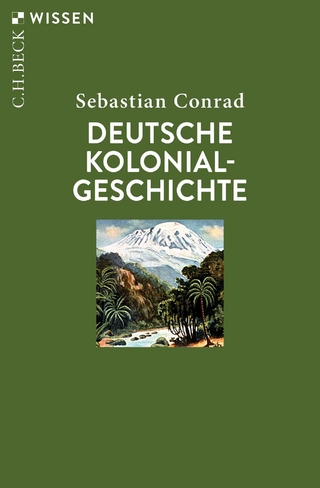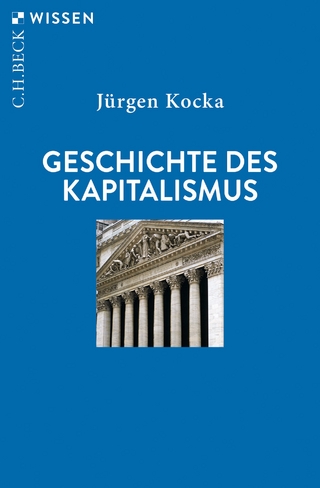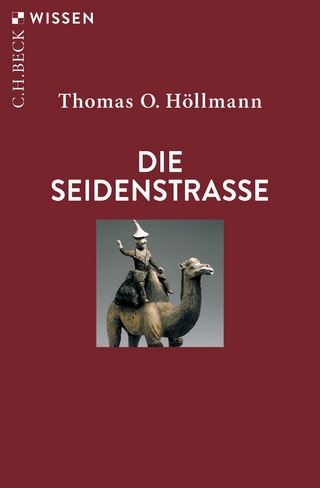
A Global History of Silk
Springer International Publishing (Verlag)
978-3-031-61987-8 (ISBN)
This book explores the global development of the production and trade of silk and related industries from a historical perspective. From the sixteenth to the twentieth century, it takes long-term movements and global dynamics into account. Covering a wide geographical area, including East-Asia, Northern and Southern Europe, and North-America, the respective contributions examine economic activities related to silk production, silk processing, trading and consumption of silk and silk fabrics, while also highlighting diverse paths of industrialization and economic development.
The book is divided into three parts, the first of which features contributions on silk markets and trade, covering topics such as auction sales and Sino-European trade. The second part addresses issues of work organization, institutional developments and the gendered division of labour, discussing topics such as systems of home-based and factory production and the organization of quality control. In turn, the third part highlights technological innovations and knowledge transfer. This book appeals to scholars and students of economic history who are interested in a better understanding of the key features and patterns in the development of the silk industry and trade and, more widely, in the global economic history of the early modern and modern periods.
Pierre Vernus is an associate professor of modern history at University Lumière Lyon 2 (France). His research focuses on economic and business history and on digital history. He directed and participated in several French or international collective research projects on businessmen, business interest organizations, and silk heritage. He authored or edited several books including Art, luxe et industrie. Bianchini Férier, un siècle de soieries lyonnaises, 1888-1992 [Art, luxury and industry. Bianchini Férier, a century of Lyon silkwares, 1888-1992]. Presses universitaires de Grenoble, 2006.
Manuela Martini is a professor of modern history at the University Lumière Lyon 2 (France) and a senior member of the Institut Universitaire de France. She belongs to the editorial collective of Gender & History and has published extensively in French, Italian, Spanish, German, and English on European economic history, gender history, and international labour migrations. Her recent publications on the history of labour and textile industry include the edited book Textile knots. Remunerations, Labour Relations and Gender in Europe during the Industrialization (18th-early 20th century), Brepols, 2024, forthcoming.
Tomoko Hashino is a professor of economic history at Kobe University (Japan). Her research interests are in the evolutionary process of the textile industry as well as the comparative development history of weaving districts in modern Japan. She coedited the book Industrial Districts in History and the Developing World, published by Springer in 2016. Her articles appear in Economic History Review, Business History Review, Australian Economic History Review, and Journal of the Japanese and International Economies. She received her Ph.D. in economics from Hitotsubashi University in 2003 and has been a visiting fellow at the University of New South Wales, the London School of Economics, George Washington University, Stanford University, University of Cape Town, and Université Lyon 2.
Introduction: Silks, A Global Perspective.- Part I: Exchanges, Markets And Trade.- 1. The Golden Age Of Valencian Silk? Rise, Crisis And Productive Reconversion Of The Valencian Silk Industry (18th-19th Centuries).- 2. Auctions And The Distribution Of Silks In The United Provinces In The 18th Century.- 3. The Impact Of Sino-European Trade On Chinese Silk Production From The Mid 17th To The Early 20th Century.- 4. From Southeast Asia To Japan. Trade, Circulation, And Uses Of Silk In 17th Century East Asia.- Part II Labour Organization, Economic Hierarchies, And Gender.- 5. A Delicate Equilibrium: State Projects, Guild Dynamics, And Personal Interests In Silk Weaving In Ancient Regime. Turin, 18th Century.- 6. The Japanese Silk Reeling Industry And Women's Labor: The Case Of The Tomioka Silk Mill.- 7. Around The Weft And The Warp: The Transformation Of Auxiliary Trades In Lyon Silk Manufacturing In The 18th And 19th Centuries.- Part III Institutions, Technology, And Transfer Of Knowledge.- 8. Organization For Quality Control: Branding In The Japanese Silk Reeling Industry.- 9. Facing Rising Uncertainty On The Silk Market From The Mid 19th Century To 1914.- 10. Rewarded Inventions And Repositories In 19th-Century Lyon Silk Industry: A Pattern Of Collective Management Of The 'Public Domain'.- 11. From Lyon To Kyoto: Technology Transfer, Inflow Of Knowledge, And Modernization Of Traditional Silk-Weaving District In Japan, 1887-1927.- Index.
| Erscheinungsdatum | 03.08.2024 |
|---|---|
| Reihe/Serie | Studies in Economic History |
| Zusatzinfo | XXII, 258 p. 36 illus., 10 illus. in color. |
| Verlagsort | Cham |
| Sprache | englisch |
| Maße | 155 x 235 mm |
| Themenwelt | Geschichte ► Teilgebiete der Geschichte ► Wirtschaftsgeschichte |
| Wirtschaft ► Allgemeines / Lexika | |
| Schlagworte | Business history • Economic History • Gender • Industrialization • Information • Labor Organization • Market • Silk fabrics • Silk Industry • Silk processing • Silk production and trades • Silk Road • Sino-European trade • Skills and technologies • textile industry • Trade |
| ISBN-10 | 3-031-61987-0 / 3031619870 |
| ISBN-13 | 978-3-031-61987-8 / 9783031619878 |
| Zustand | Neuware |
| Haben Sie eine Frage zum Produkt? |
aus dem Bereich


